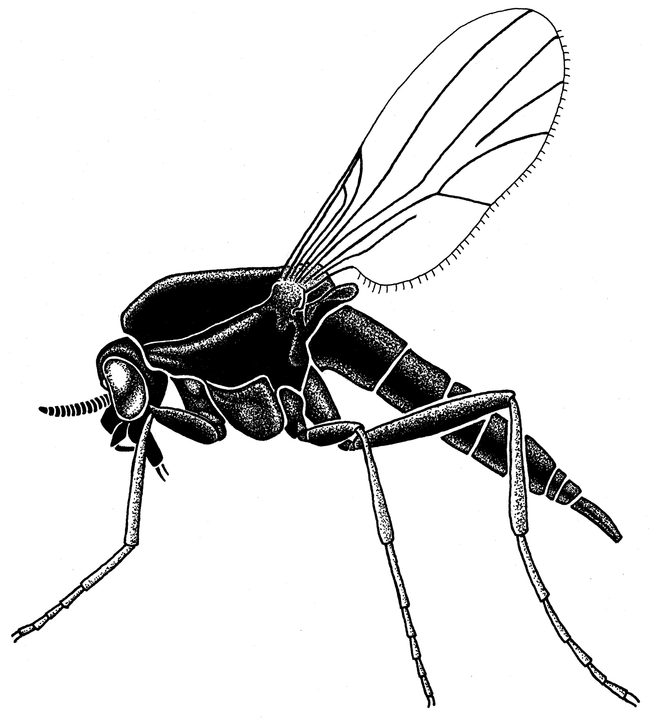
Tabatha Yang and her six-month-old son, Karoo, were sitting on their lawn last Sunday at their West Davis home, when she saw red. Literally.
One minute they were enjoying the springlike weather, and the next minute his head was covered with bright red dots. Looking closer, she spotted a tiny insect in his eye, which she quickly removed.
Then her legs began to welt and itch.
They had just encountered no-see-ums, tiny Valley Black Gnats that feed on blood.
“The adults are emerging in large numbers now and need blood so residents need to beware of grassy areas that cover alkaline clay soils,” said Lynn Kimsey, director of the Bohart Museum of Entomology and professor entomology at UC Davis. “These insects are ferocious biters. Even though they don't spread any diseases, they are sufficiently annoying to keep people indoors in some areas of California.”
The Bohart Museum is now fielding scores of calls and emails.
“These no-see-ums are smaller than fleas and have a supreme itch,” said Yang, Bohart Museum education and outreach coordinator, who knew immediately what they were.
The biting gnats are particularly troublesome along the west side of the Sacramento Valley, including Davis and Woodland. “They're often in grassy areas, such as in parks and on golf courses on the west side of California's Central Valley,” Kimsey said. “When the soil begins to dry and cracks develop, the adults emerge.” The complete life cycle from egg to adult takes about two years.
The no-see-ums (Leptoconops torrens) belong to the family Ceratopogonidae and are about 1/16-inch long. They are so tiny they could pass through window screens, but they don't, Kimsey said. However, they can and do slip beneath loose clothing, unnoticed, to get a blood meal.
Like mosquitoes, only the female no-see-ums bite. The insects breed when the weather warms in the spring, usually in May and June, and they remain a pest for several weeks, Kimsey said. They need a blood meal to complete their reproductive cycle.
They also bite domestic and wild animals and birds.
The females inject saliva into the skin, which pools the blood just beneath the surface, resulting in a small red dot that becomes excruciatingly itchy. A single bite can welt into a one-or two-inch diameter spot, which lasts about two weeks.
Kimsey cautions people not to scratch the welts, as scratching makes the itchy bites last twice as long and can lead to infected sores.
To avoid being bitten, Kimsey recommends that you limit exposure by not sitting long in places where they are likely to occur, or where you've heard of problem areas. “Move quickly through the area.”
“Repellents,” she added, “aren't effective against these flies.”
(Editor's Note: Like Bug Squad on Facebook)
Attached Images:

